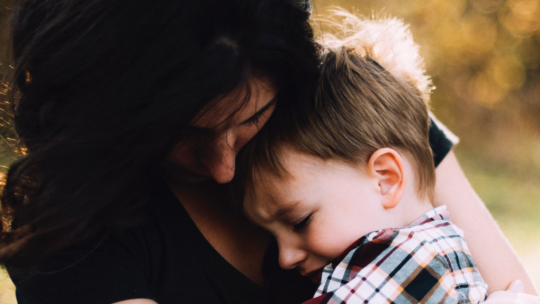As an educator, how do you support a child after trauma? What do you say to them after something unimaginable happens? How do you help them feel safe again?
There are no tricks or magic formulas. Recovering from trauma takes time, not just days or weeks, but oftentimes years and even lifetimes.
So, how can you help? Be a reliably present and supportive adult for the children around you. That’s the number one most important thing you can do to mitigate the effects of childhood adversity.
Trauma is defined as any event that causes substantial emotional distress and can present in children as:
- The development of new fears
- Separation anxiety (particularly in young children)
- Sleep disturbance
- Nightmares
- Sadness
- Loss of interest in normal activities
- Reduced concentration
- Decline in schoolwork
- Anger
- Somatic complaints
- Irritability
In community samples, the American Psychological Association (APA) found that more than two-thirds of children reported experiencing a traumatic event by age 16. For educators, being trauma-informed is no longer optional; it’s essential.
In his book The Body Keeps the Score: Brain, Mind, and Body in the Healing of Trauma, author Bessel A. van der Kolk MD shares the ways trauma can change our relationship with our bodies:
“Traumatized people chronically feel unsafe inside their bodies: The past is alive in the form of gnawing interior discomfort. Their bodies are constantly bombarded by visceral warning signs, and, in an attempt to control these processes, they often become expert at ignoring their gut feelings and in numbing awareness of what is played out inside. They learn to hide from their selves.”
When trauma happens, every part of us is affected. The best we can do is to stay calm and mindful of what’s going on around us and to encourage children who may be processing trauma to be open about what they’re experiencing.
As Mr. Roger’s said, “Anything that’s human is mentionable, and anything that is mentionable can be more manageable.”
Your role as a present and supportive adult is to listen, stay open, and nonjudgemental, and encourage your young ones to stay connected to themselves and how they’re feeling.
If they ask questions about a traumatic event, be brief and honest. Depending on their age level, it may not be necessary to provide certain details. It may be helpful to limit their exposure to news.
Some children may prefer to talk through their feelings, while others may prefer to express themselves through art, music, or another outlet. Respect how they choose to process their big feelings. Keep encouraging them to check in with themselves.
It may be helpful to guide them through mindfulness exercises to help them self-regulate when they’re feeling overwhelmed.
Also, know that there are people who can help. If you notice a child is experiencing a level of PTSD that is interfering with their daily functioning, be sure to reach out to a guidance counselor, a therapist, or other trauma-informed experts in your community.
“Being able to feel safe with other people is probably the single most important aspect of mental health; safe connections are fundamental to meaningful and satisfying lives.” – Bessel A. van der Kolk MD
Oftentimes, traumatic events are out of our control. However, we can choose how we respond to those events. We can choose how we show up for our students who trust us and look to us for guidance.











